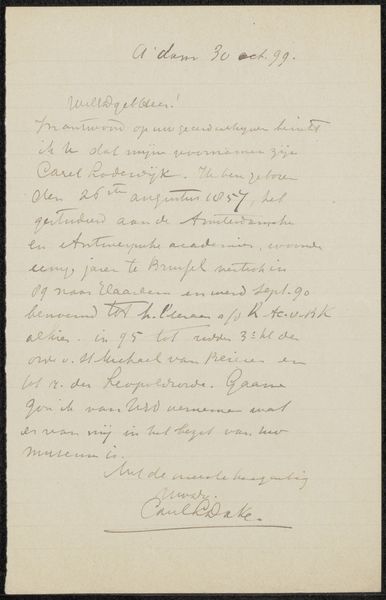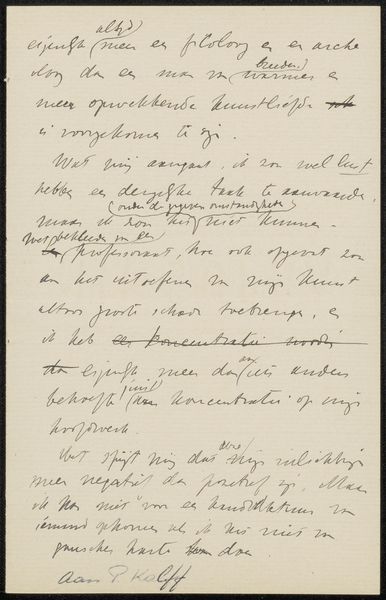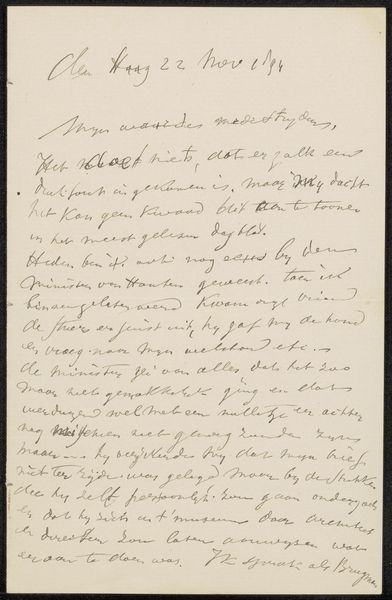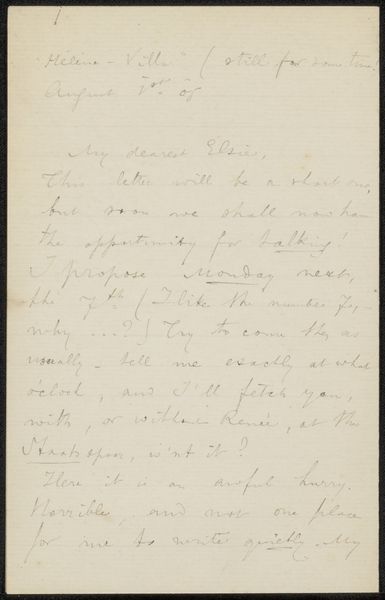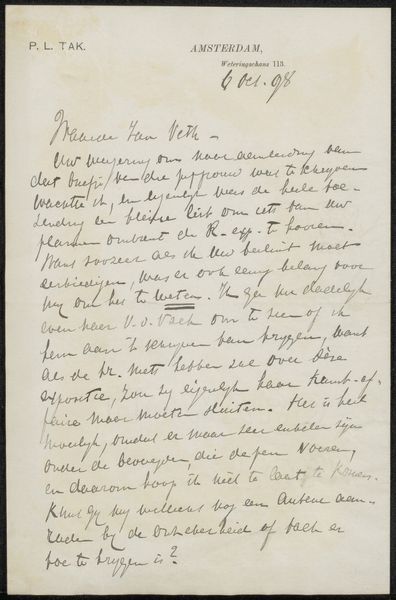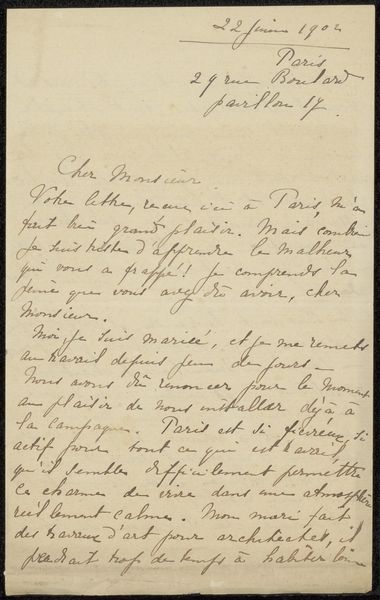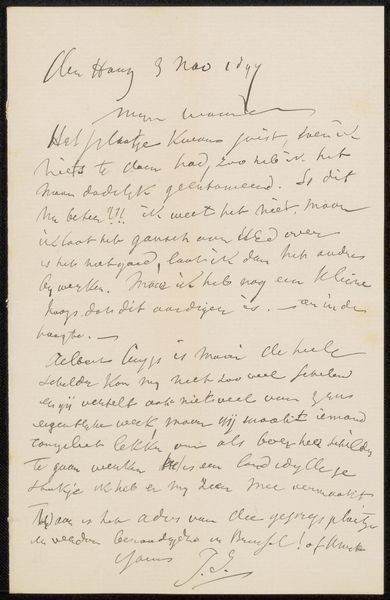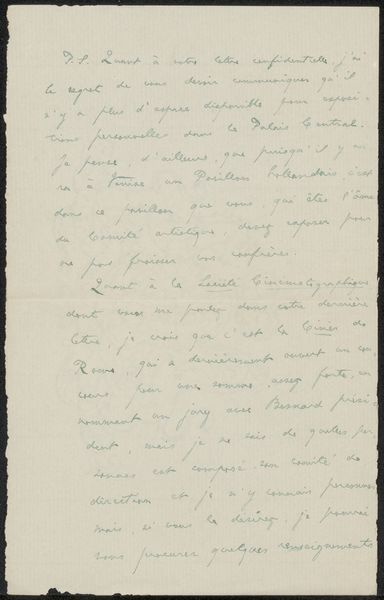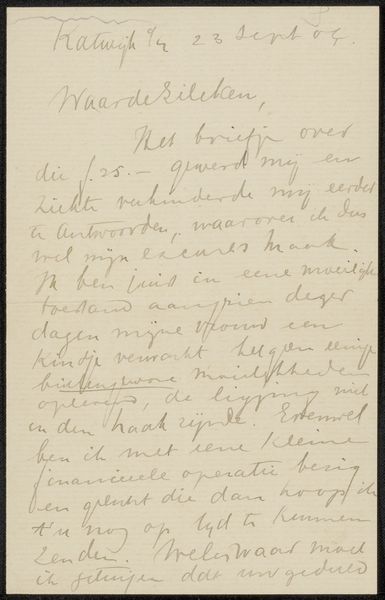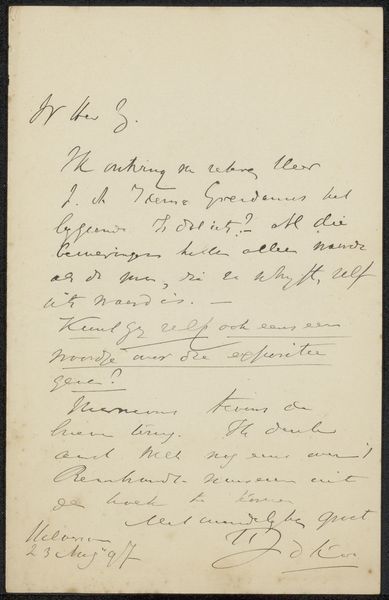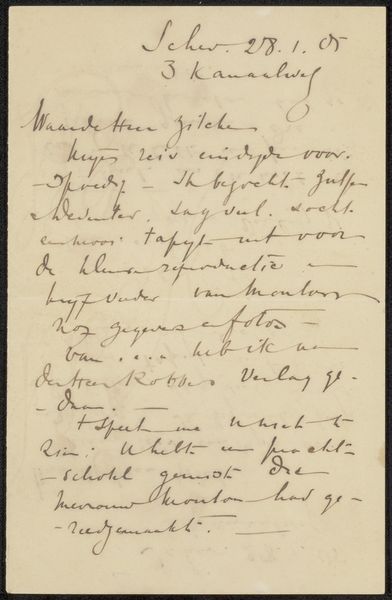
drawing, textile, paper, ink, pen
#
drawing
#
hand-lettering
#
hand drawn type
#
textile
#
paper
#
personal sketchbook
#
ink
#
pen-ink sketch
#
pen work
#
sketchbook drawing
#
pen
#
sketchbook art
Copyright: Rijks Museum: Open Domain
Curator: Here we have "Brief aan Elsie Maud Cownie" possibly from 1905 or 1906, created by Philip Zilcken. It's comprised of ink on paper. My initial impression is how much it reminds me of personal sketchbooks or letters found tucked away, full of intriguing private musings. Editor: Yes, it certainly has that intimate, epistolary feel. Looking closely, the formal elements—the controlled pen work, the elegant if hurried script, the composition completely filled with text—suggest an intellectual world and a social elite documenting their experiences for private eyes only. Curator: Exactly. If we delve into Zilcken's milieu, we find he circulated within artistic and aristocratic circles. This letter provides an interesting window into the casual prejudices of the upper class at the time—consider the snide remarks about the "clever 'American' young lady," as well as its reflection of his network. Editor: Precisely, his network becomes explicit through the hand itself, the hurried movements constructing what appears as diary, which seems to then become performance, self conscious as soon as it meets the page as social theatre. There is also this line when visiting with Renee “to the C. and Countess Contin,” which, the Cont “played splendidly.” What are the power relations that create hierarchies that are based solely on lineage rather than craft? What are the structural forces perpetuating them? Curator: The lack of visual elements makes it stand apart in Zilcken’s production which mainly consisted of graphic art and print making. However, I disagree that there isn’t visual work here; rather, the careful penmanship is deployed like texture or ornament on a textile work. Its texture as its theme, one of an era in a bubble, of which this hand lettered page serves as testimony. Editor: True, true. I suppose, in its raw documentary nature, "Brief aan Elsie Maud Cownie" offers invaluable insight. It serves as both a snapshot of the social environment from over a century ago while simultaneously questioning which social practices get passed along with penmanship traditions like his, of Mozart or Beethoven. Curator: And those forces shaping what’s seen—and what remains unseen—today. Well put. Thank you.
Comments
No comments
Be the first to comment and join the conversation on the ultimate creative platform.

